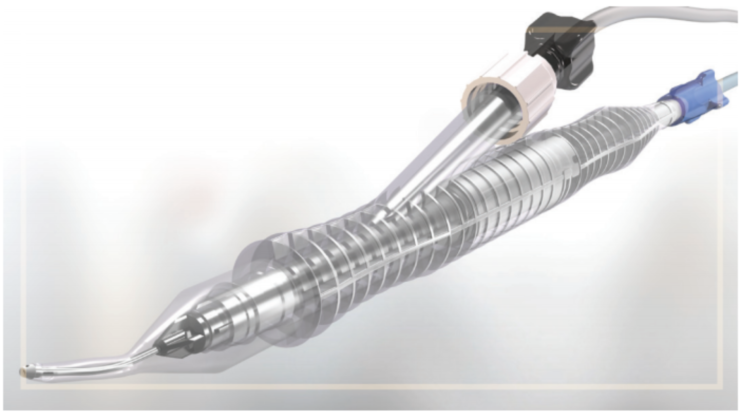Novel solutions to surgical challenges often come directly from the surgeons themselves. Such is the case with the Intrepid Transformer, the newest irrigation/aspiration (I/A) handpiece introduced by Alcon for its Centurion Vision System. The brainchild of renowned surgeon Stephen S. Lane, MD, this handpiece was designed to enable surgeons to quickly and safely switch back and forth between coaxial and bimanual surgery during a single procedure.
“I think many of us have struggled over the years with subincisional cortex at times, and while we can eventually remove it, we may have felt that the additional time required may have compromised our safety margin,” says Dr. Lane, who is adjunct professor of ophthalmology at the University of Minnesota, Minneapolis, and chief medical officer and global head of Clinical Development and Medical Affairs at Alcon. “That was the impetus for creating a single handpiece for use in coaxial or bimanual mode without needing to introduce new instruments or change tubing or settings. Simply by twisting and turning, the aspirator separates from the irrigator, and can be used in a bimanual fashion (Figure).”

Image courtesy of Alcon
Figure. With a simple twist of the Intrepid Transformer I/A Handpiece, the surgeon can quickly switch from coaxial to bimanual mode during a single procedure.
Versatility in a Single Handpiece
Upon first glance, this looks like a typical coaxial I/A handpiece with a polymer tip, says John Berdahl, MD, a clinician and researcher with Vance Thompson Vision in Sioux Falls, S.D. “What is really almost magical about it is that you can quickly and easily turn it into a bimanual I/A handpiece,” Dr. Berdahl says. “With just a quarter turn, you can pop out the aspiration port, separate the irrigation from the aspiration, and retrieve the subincisional cortex without having to torque the incision or change the contour of the eye. It allows for a nice physiologic surgery.”
In coaxial mode, the handpiece enables one-handed cortex removal. In bimanual mode, the irrigation sleeve remains in the primary incision to help maintain chamber stability, while the polymer-tipped aspiration port is used in a secondary incision. Working bimanually provides greater access to the subincisional cortex and also facilitates polishing endothelial cells from the undersurface of the anterior capsule. In addition, Dr. Berdahl notes that he can make micro adjustments to a toric lens while aligning it properly using the bimanual technique.
“The polymer tip of the bimanual aspirating port is a major advantage in terms of its smoothness,” Dr. Lane says. He notes this is particularly important for complicated cases requiring a gentle touch, such those in which the zonules may be compromised. “The extreme smoothness of a polymer tip is beneficial for helping avoid any potential damage in these cases,” he says.
Boost Operating room Efficiency
This handpiece offers the advantages and conveniences of a coaxial cannula with the added benefit of being able to transform into a bimanual device in seconds. Not only does this enable surgeons to respond rapidly to developments during a case but it also improves OR efficiency.
“I appreciate having a bimanual I/A handpiece at my disposal all of the time, whether for a routine case or a complicated case,” Dr. Lane says. “The Transformer gives me so much flexibility that I use it for every case.”
Dr. Berdahl serves as a consultant to Alcon.
Dr. Lane is on staff at Alcon.


